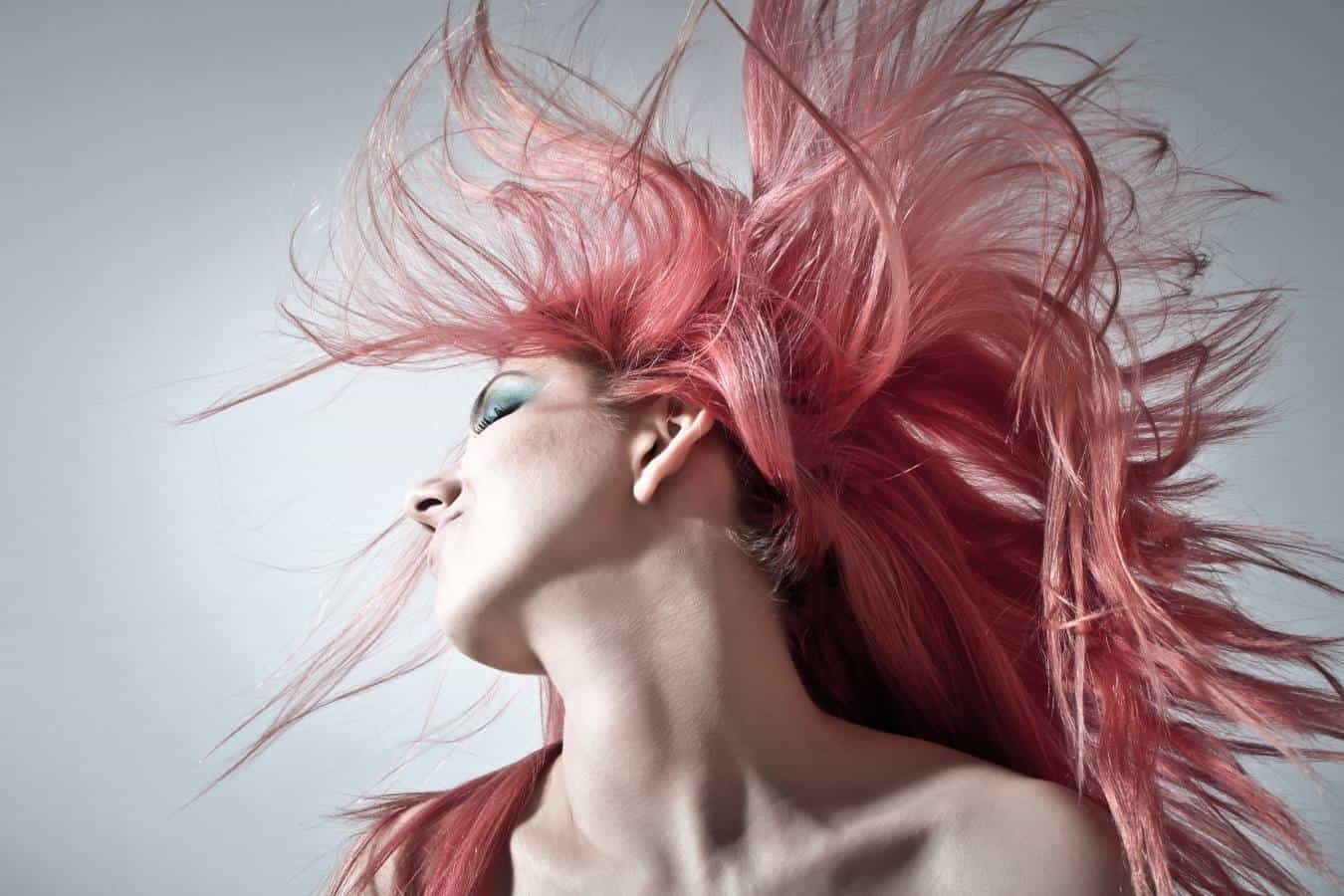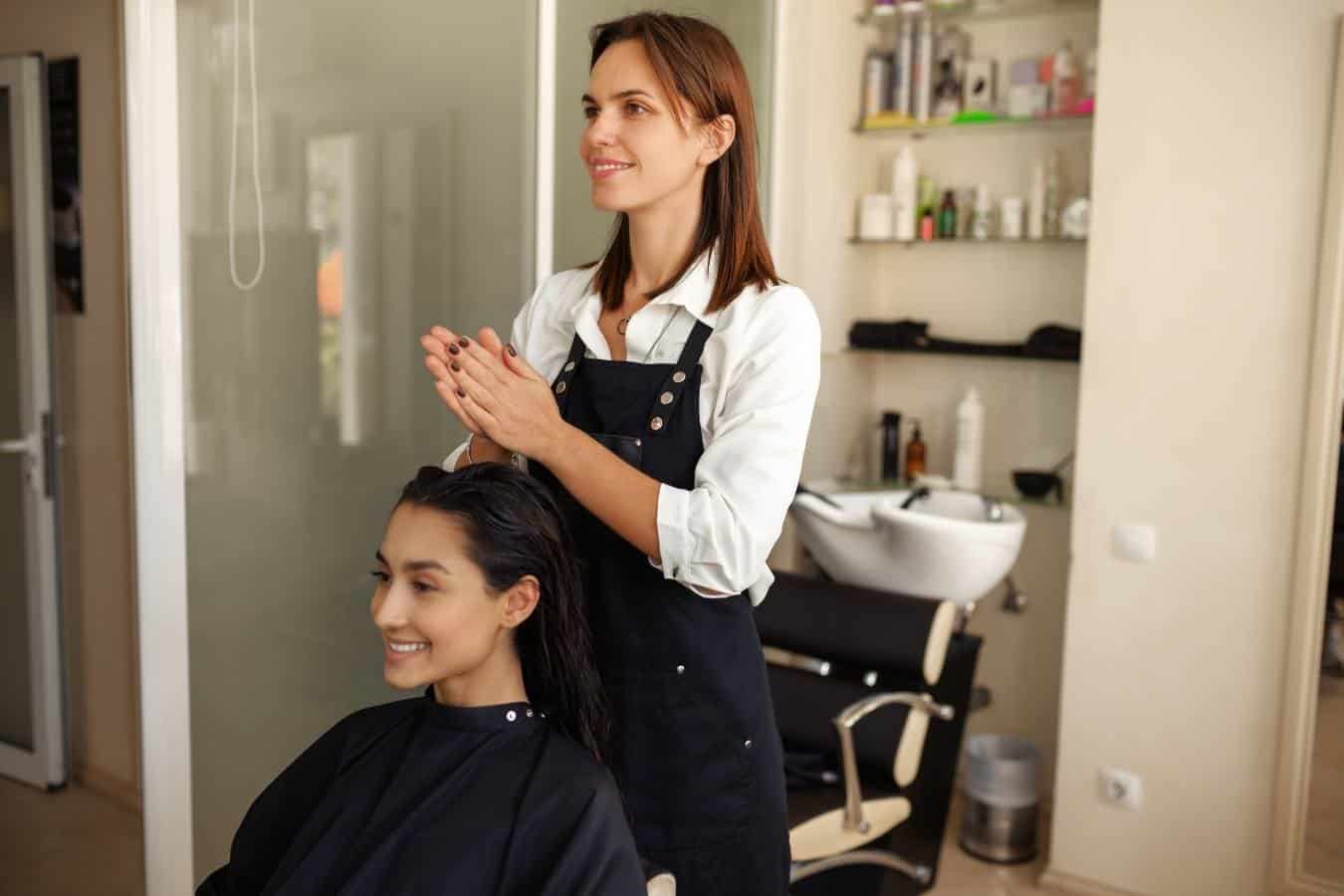Some hair products can remove hair dye. Could gel be one of them? This article looks at the effect of gel on your hair and whether it works to remove hair dye.

Some gels are capable of removing hair dye. These gels contain alcohol, which is a powerful solvent that opens the hair cuticle.
In addition, most hair gels contain chemicals that weaken the hair cuticle, allowing the color to fade over time.
Is Gel Good Or Bad For Hair?
To start, gel is a hair product used to stiffen the hair, so it holds a particular style.
Hair gels have a thick consistency but can be applied smoothly and evenly to hair to achieve the desired results.
The active ingredient in hair gel are polymers that deposit onto the surface of your hair strands.
These polymers create forces of attraction between neighboring hair strands so that the hair clumps together, creating the “hold” needed to maintain your preferred hairstyle.
Hair gel also contains plenty of water.
After application, the water will slowly evaporate, which causes the polymers to harden into a transparent film.
This solid film is fragile and can easily be disrupted by combing, handling, weather conditions, or washing.
Hair gels are popular because they tend to be lightweight and non-greasy. They also make your hair shiny and allow you to switch up your hairstyles.
However, gels are not made equal.
Some gels on the market contain short-chain alcohols, an ingredient used to make the gel dry faster.
These alcohols also give gel a slippery texture so that you can apply it quickly and smoothly over your hair.
Another possible use of alcohol is preventing bacterial growth and lengthening the product’s shelf life.
Does Gel Remove Hair Dye?

An alcohol-based gel can remove hair dye because of the way it quickly dries your hair out.
Hair experts typically warn against the use of hair products with alcohol if you want to maintain the vibrancy of your color-treated hair.
That’s because, for alcohol to dehydrate your hair, it has to lift the hair cuticle so that moisture can escape.
When your cuticles are left open, the dye molecules that bind to the inner cortex are easier to remove during your next wash.
This is especially so if you use a clarifying shampoo on your hair. Due to the damage caused by the chemicals in hair gel, the dye will continue to fade fast with subsequent washes.
Besides alcohol, hair gels also contain a concoction of chemicals, preservatives, fragrances, and additives that help to strip color from dyed hair.
Overexposure to chemicals contributes to color fading by encouraging the cuticle to open. This allows the dye molecules to slip out faster.
However, you should note that alcohol-free gels may not be as effective at removing hair dye.
Most alcohol-free gels contain nourishing ingredients and are still effective at holding and shaping your style, though they are not as quick-acting.
Therefore, if you aim to remove hair dye using gel, the mild formulation in these gels may not get you the desired results.
How To Use Gel To Remove Hair Dye

Gels that contain alcohol are generally better at removing hair dye. But given some of the adverse side effects of gel on hair, it’s best to use gel sparingly.
To get started with the dye removal process, simply follow these steps:
- First, shampoo your hair to remove dirt, buildup, and hair.
- Apply the gel to your hair and let it sit. Leaving the gel to sit for longer in your hair helps to strip it of more color, while leaving it for a shorter time may only lighten your hair by a few shades.
- Shampoo your hair with warm water. This helps remove the gel product and strip away the color more effectively. Do a final rinse with cold water to close the cuticles.
- Condition your hair and dry it before applying moisturizer to prevent dry hair.
- If you’re planning to leave the gel to sit for longer, you can use it as a regular styling product. That way, you can go about your day as usual and wash it off later
For other hair dye removal tips, check out my post on How To Remove Hair Dye With Hairspray.
Side Effects Of Hair Gel
Generally, alcohol-based gels are not good for hair and are associated with the following side effects.
Dry Hair
Hair gels contain alcohol that dries your hair. Together with other chemicals and additives in gel, the alcohol strips your strands of their natural oils.
Most manufacturers add alcohol to gel products, so you don’t have to wait longer for your hairstyle to hold. But this leaves your hair and scalp dehydrated.
When your strands lack moisture, this leads to brittleness and frizziness.
So, while gels hold the promise of manageable, shiny, and easy-to-style hair, they create the opposite effect by making your hair dry, limp, and frizzy over time.
Hair Breakage
When your hair and scalp are dry and dehydrated, your hair strands are no longer healthy. They become weak and prone to breakage.
This eventually leads to split ends and can cause your hair to fall out.
In addition, the ingredients in gels tend to clog your hair follicles, weakening hair roots and potentially leading to more serious problems like baldness.
Dandruff
Excessive application of gel can lead to product buildup and flakiness. The thick consistency of gel enables it to stick to the scalp, forming a film that can interrupt sebum production.
The gel can irritate the scalp, leaving it dehydrated and malnourished.
If you’re already dealing with dandruff, applying hair gels can make the problem worse by causing further inflammation of the scalp.
Hair Discoloration
Besides damaging hair and causing breakage and hair loss, hair gels can also cause discoloration.
That’s because the chemical compounds in hair gel mess with the hair’s pH balance, stripping it of its shine.
If you have color-treated hair, the dye will fade faster with prolonged use of the hair gel. Hair gels that contain strong alcohols can bleach hair, causing graying.
Good Vs. Bad Alcohols In Hair Gel
It’s important to note that while some alcohol-based gels are not good for your hair, other gels containing alcohol can be beneficial.
The difference lies in the type of alcohol used.
Hair gels that contain short-chain alcohols cause frizz, and the list of such alcohols includes ethanol, propanol, isopropyl alcohol, propyl alcohol, and SD alcohol.
Short-chain alcohols are lightweight, which allows them to dry hair quickly.
On the other hand, long-chain alcohols, also known as fatty alcohols, help to moisturize hair. Thus, they leave your tresses soft, hydrated, and shiny.
Common examples of beneficial alcohols used in hair products include cetyl alcohol, stearyl alcohol, and lauryl alcohol.
Disclaimer: This site is not intended to provide professional or medical advice. All of the content on LovedByCurls.com is for informational purposes only. All advice should be followed at your own discretion. Ingredients may change at any time so always check the product label before using. Check our full disclaimer policy here.
